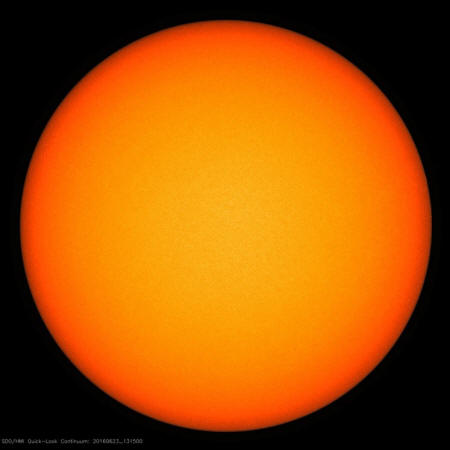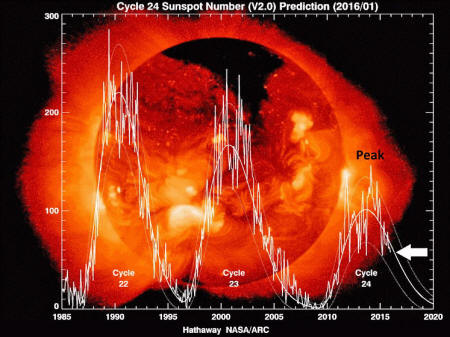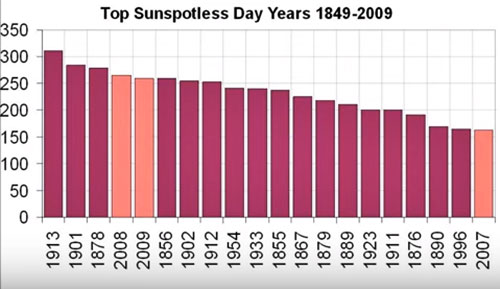|
from VencoreWeather Website
is completely spotless for the second time this month image courtesy NASA
On June 4th, the sun went completely spotless for the first time since 2011 and that quiet spell lasted for about 4 days. Sunspot regions then reappeared for the next few weeks on a sporadic basis, but are once again completely missing from the surface of the sun.
The blank sun is a sign that the next solar minimum is approaching and there will be an increasing number of spotless days over the next few years.
At first, the blankness will stretch for just a few days at a time, then it'll continue for weeks at a time, and finally it should last for months at a time when the sunspot cycle reaches its nadir.
The next solar minimum phase is expected to take place around 2019 or 2020.
The current solar cycle is the 24th
since 1755 when extensive recording of solar sunspot activity began
and is the weakest in more than a century with the fewest sunspots
since cycle 14 peaked in February 1906.
which shows a clear weakening trend courtesy Dr. David Hathaway, NASA/MSFC
Going back to 1755, there have been only a few solar cycles in the previous 23 that have had a lower number of sunspots during its maximum phase. The peak of activity in April 2014 was actually a second peak in solar cycle 24 that surpassed the level of an earlier peak which occurred in March 2012.
While many solar cycles are
double-peaked, this is the first one in which the second peak in
sunspot number was larger than the first peak. The sunspot number
plot (above) shows a clear weakening trend in solar cycles since
solar cycle 22 peaked around 1990.
In fact, the famous "superstorm" known as the Carrington Event of 1859 occurred during a weak solar cycle (number 10).
In addition, there is some evidence that most large events such as strong solar flares and significant geomagnetic storms tend to occur in the declining phase of the solar cycle. In other words, there is still a chance for significant solar activity in the months and years ahead.
The last solar minimum phase lasted from
2007 to 2009 and it was historically weak. In fact, it produced
three of the most spotless days on the sun since the middle 1800's
(bar graph below).
the last solar minimum phase produced 3 of these years
First, cosmic rays surge into the inner solar system with relative ease during periods of solar minimum. Galactic cosmic rays coming from outside the solar system must propagate upstream against the solar wind and a thicket of solar magnetic fields.
Solar wind decreases and sun's magnetic field weakens during solar minimums making it easier for cosmic rays to reach the Earth.
This is a more dangerous time for astronauts as the increase in potent cosmic rays can easily shatter a strand of human DNA. Also, during years of lower sunspot number, the sun's extreme ultraviolet radiation (EUV) drops and the Earth's upper atmosphere cools and contracts.
With sharply lower aerodynamic drag, satellites have less trouble staying in orbit - a good thing.
On the other hand, space junk tends to
accumulate, making the space around Earth a more dangerous place for
astronauts.
|




